Menu
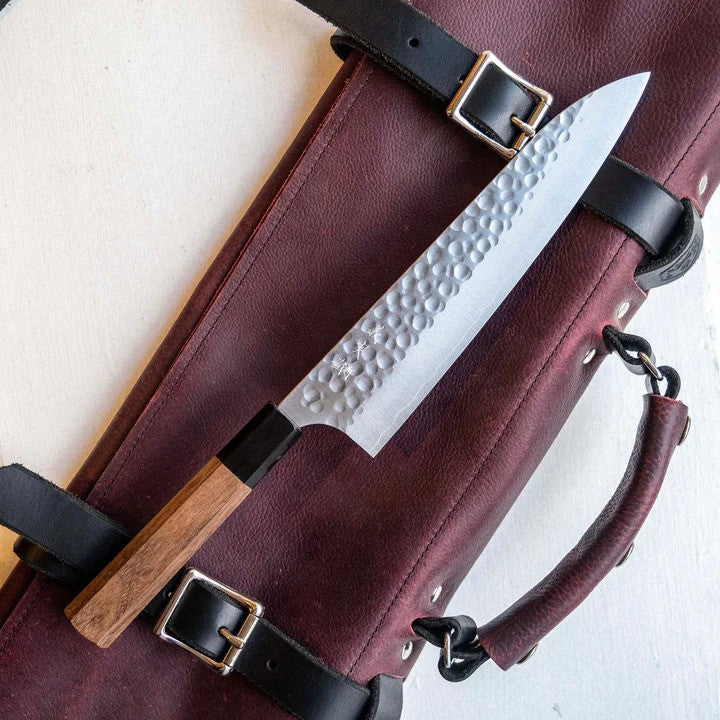
THE BLACKSMITH
YOSHIMI KATO
- Choosing a selection results in a full page refresh.






















Usually ready in 1 hour
| Length | 170 mm |
| Total Length | 310 mm |
| Steel | SG2(R2) |
| Handle | Olive Wood |
| Ferrule | N/A |
| Rockwell | 63 |
| Height Spine to heel | 47 mm |
| Width at Spine | 2 mm |
| Weight | 131 g |
| Bevel | Double (50/50) |
Yoshimi Kato
Yoshimi Kato works out of the Takefu Knife village and took over the Family business from his father in-law in 2013. His Father in-law Hiroshi Kato-san started the shop in the late 1960's and was inaugurated as the 4th Chairman of the Takefu Knife village in 1994. Making incredible knives runs in the family obviously and we're very excited to have these incredibly sharp knives in our shop. They have one of the most beautiful tsuchime patterns we have ever seen and are sharpened by famous knife sharpener Makoto Kurosaki; brother of one of our favorite knifemakers Yu Kurosaki.
Takefu Knife Village
The Takefu Knife Village is a cooperative workshop in the Echizen region of Japan. It is the home to a long list of blacksmiths that we work with and many young and upcoming apprentices learning the trade. The area has a 700 year long history of smithing with roots in agricultural tools turned cutlery powerhouse.
The Knife
Santoku translates to three virtues. Meat, fish, and vegetables, or slicing, dicing, and chopping. No matter what way you look at it, it implies the versatility of the knife. While you sacrifice some of the slicing capability of a larger gyuto, don't be fooled by its size, the santoku can get 99% of your kitchen tasks done without breaking a sweat, which is probably why its the most popular shape in Japanese home kitchens.
Follow these care recommendations for your Japanese knives to protect the edge and keep them sharp as long as possible:
All products are shipped within 24 hours. We offer same day shipping for products ordered by 12pm. Please allow 4-7 business days for your shipment to arrive with standard shipping. Expedited shipping options are also available at checkout.
We offer free shipping on orders within Canada over $150 CAD and free shipping on orders to the US over $200 USD.
Curbside pick-up is available at both our Hamilton and Etobicoke locations.
To make sure our customers are always satisfied, we offer full refunds on products for 14 days after receiving them. See our full return policy for details.
More questions? Check out our shipping policy, our return policy, or reach out to us directly.
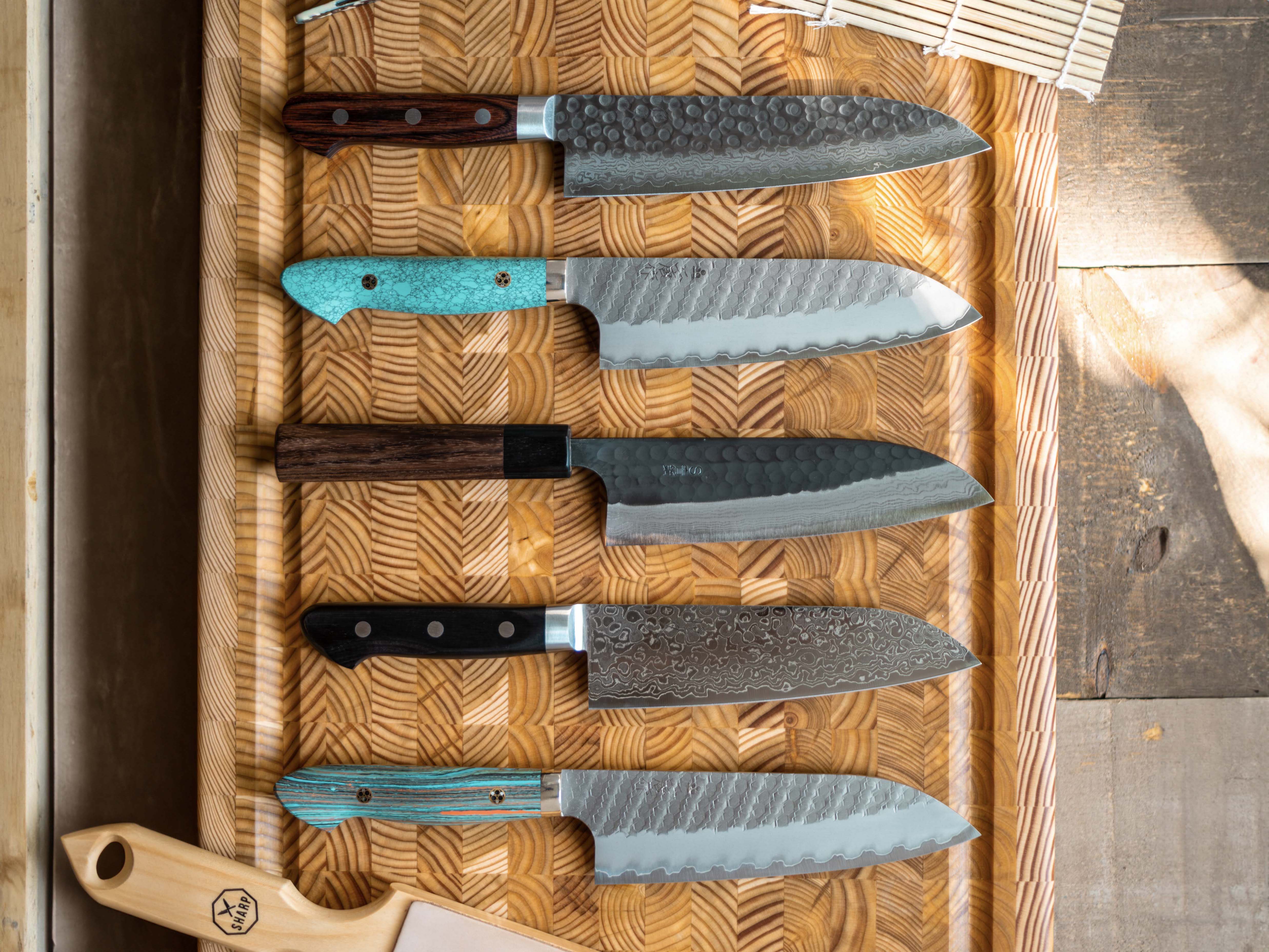
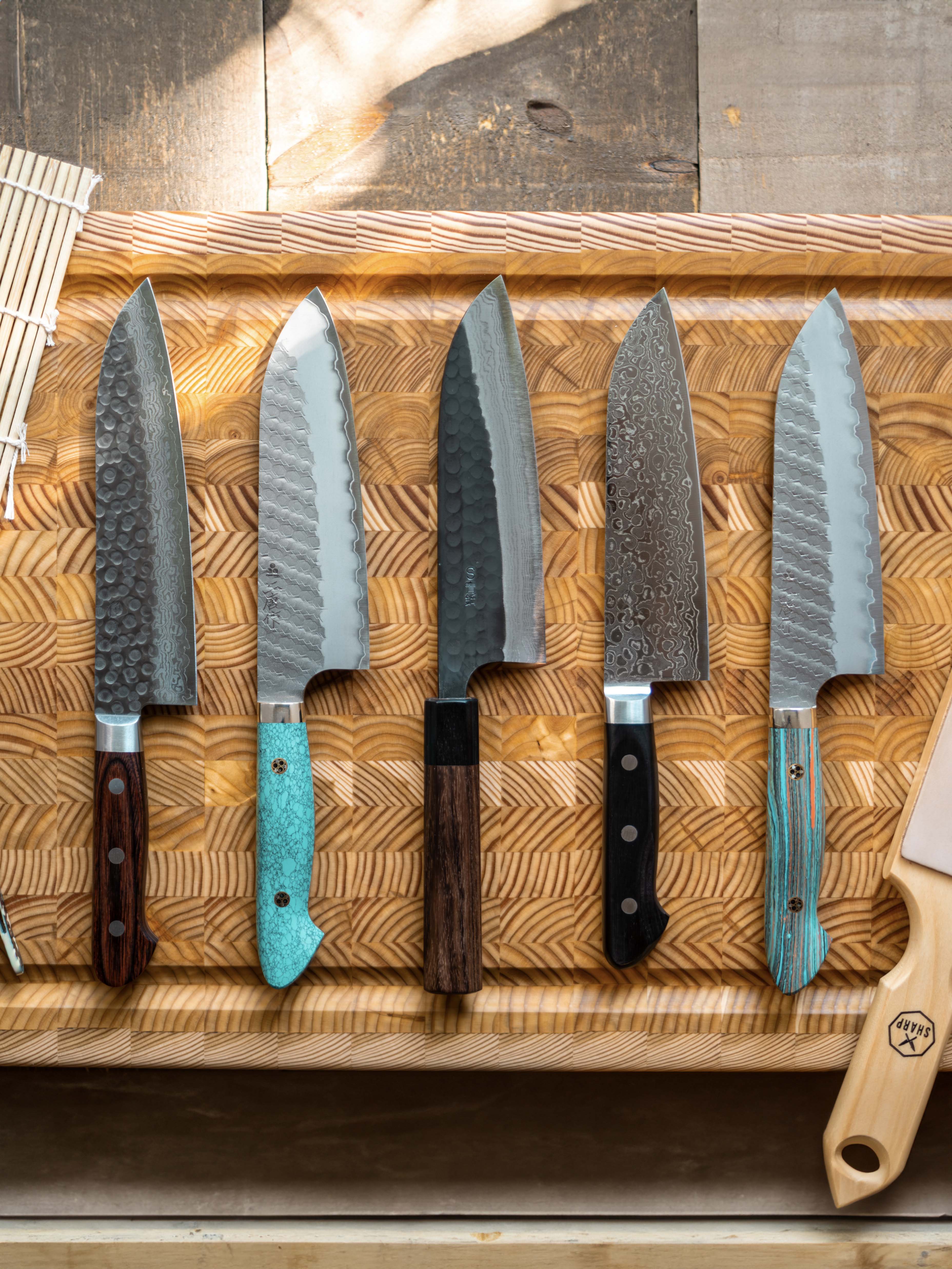
The word "Santoku" translates to "three virtues" and refers to slicing, dicing, and chopping, or meat, fish, and vegetables, depending on who you ask. The name highlights the extreme versatility of the shape, which is why we recommend it most to home cooks. Santokus are typically in the 165 mm (6.5 inch) to 180 mm (8 inch) length range. They generally have a gentle curve that sweeps up toward the tip, so they can easily be used with an up and down chopping motion or a rocking motion.
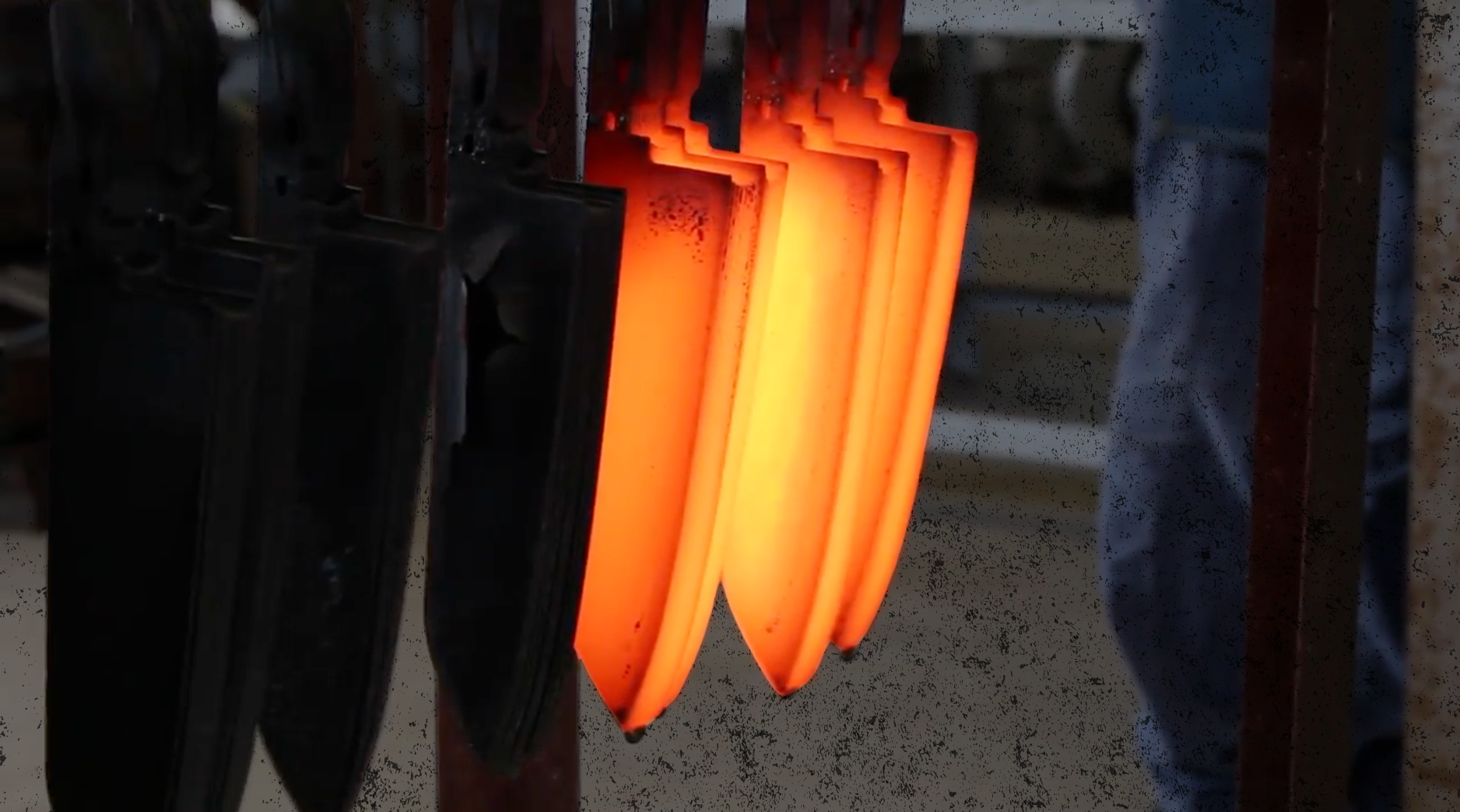
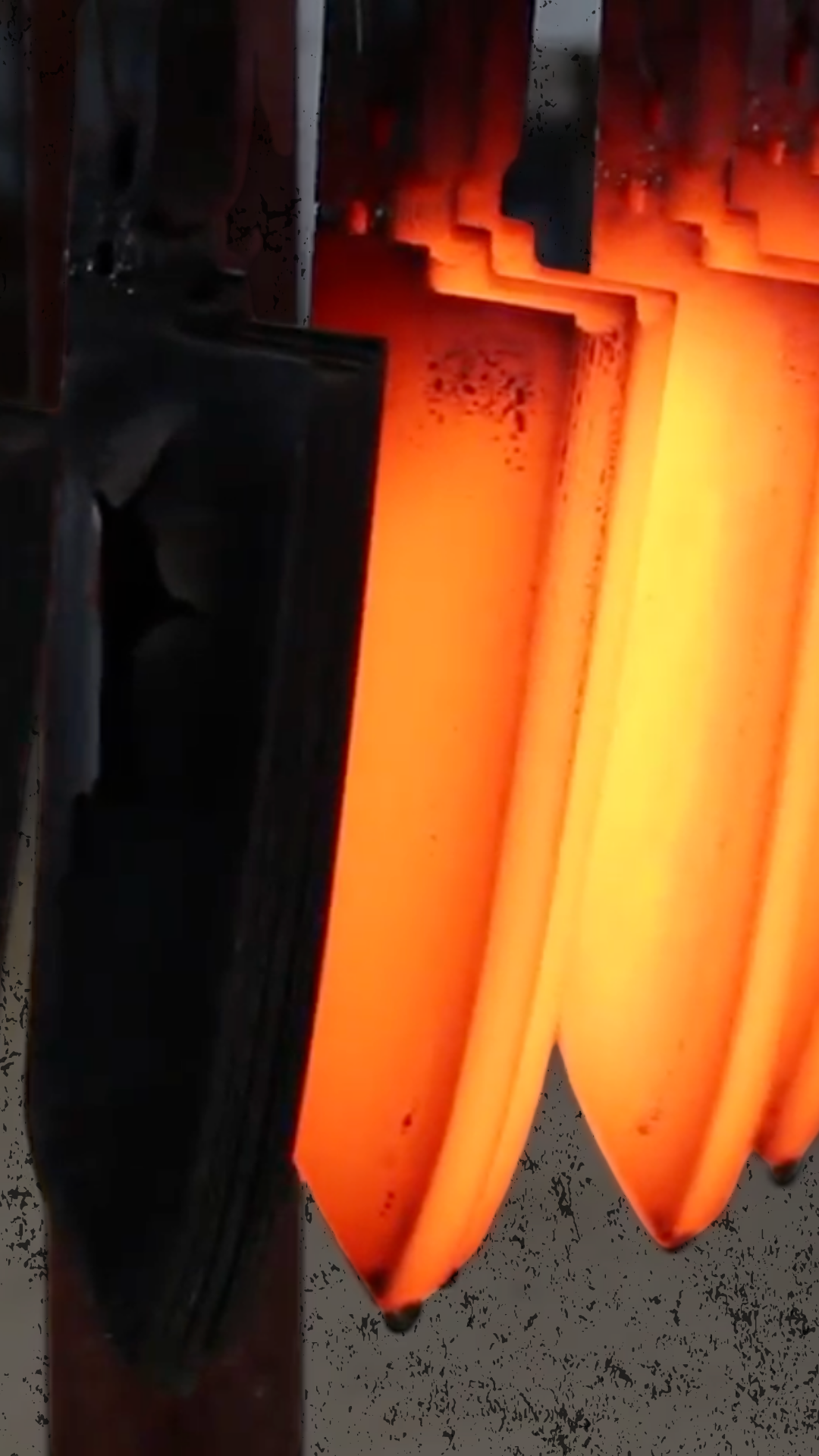
R2 and SG2 are technically different steel types, but are so similar we and many other retailers lump them into the same category. They are what’s known as a “quick powdered” stainless tool steel with incredible edge retention and corrosion resistance. Their one drawback is that their hardness can make them difficult to sharpen. It is not a steel we would recommend for those planning to thin and polish the bevels of their knives unless they are equipped with the proper tools (you will need a low grit stone in the #200 grit range).
Chemical Composition:
C 1.25-1.45% | Cr 14.0-16.0% | Mo 2.3-3.3% | V 1.8-2.2%
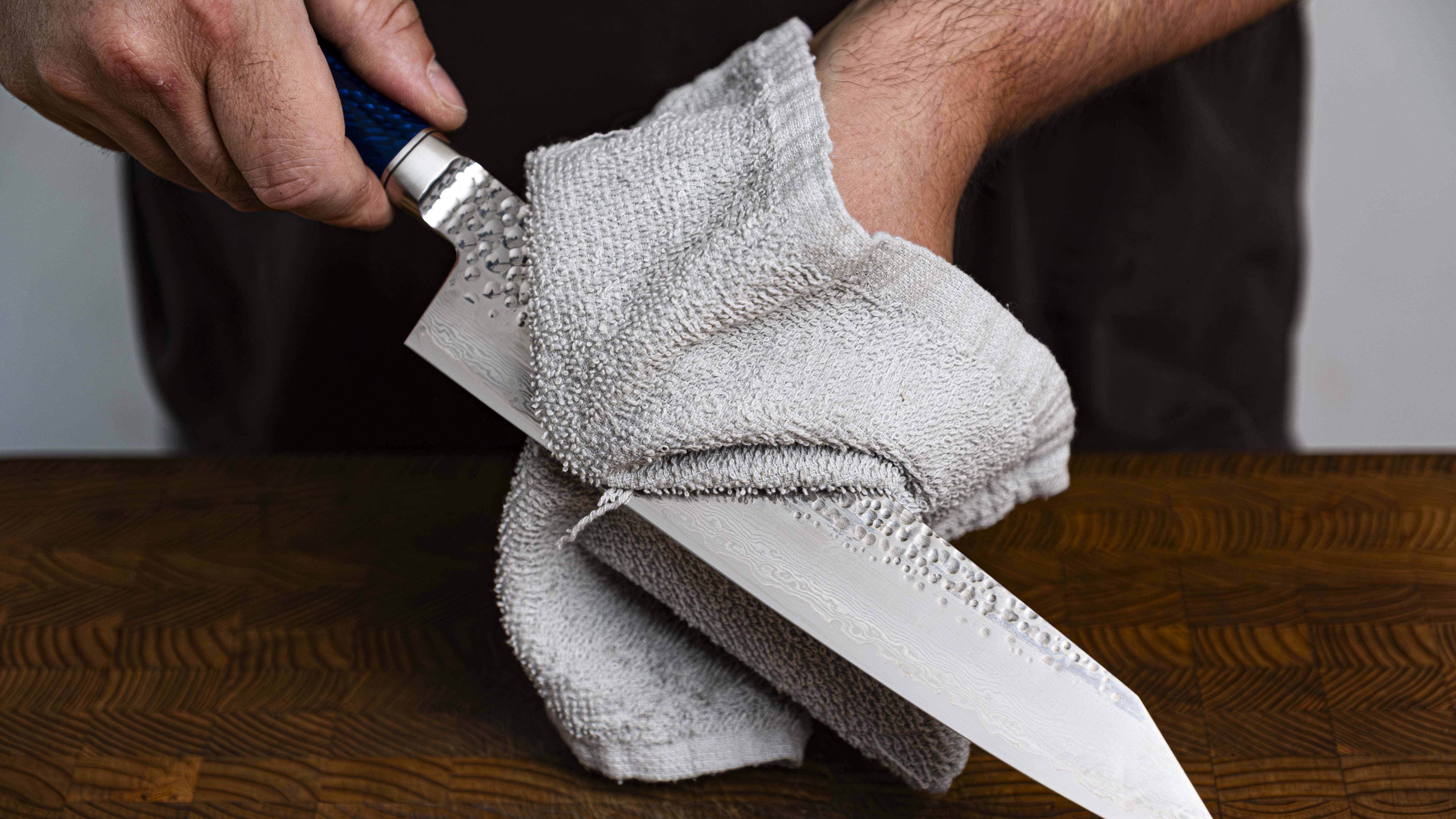
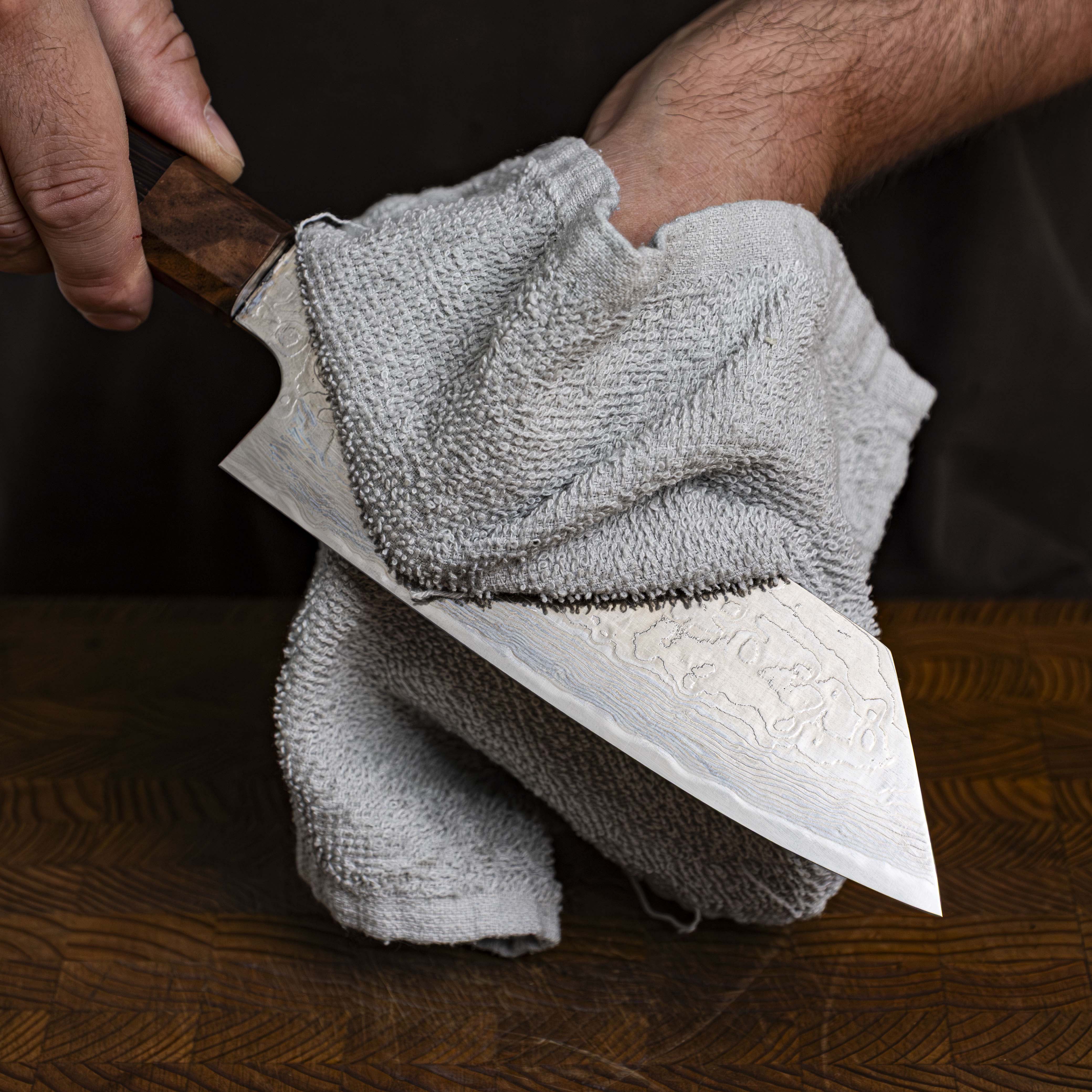
LOW MAINTENANCE
Stainless steel Japanese knives are made in a process called “Sanmai” or “Forge welding” where two softer layers of stainless steel are laminated around a harder core layer of stainless steel. All three of these layers are rust resistant and therefore are not susceptible to rust or discoloration. The softer outer layers of steel are used to make the knife more durable and flexible while the harder core layer is used to provide better edge retention to the blade.

Yoshimi Kato works out of the Takefu Knife Village in Echizen City, Fukui Prefecture, Japan. He took over the family business, Kanehiro Hamono, from his father in-law, Hiroshi Kato-san, in 2017. Hiroshi Kato-san started the shop in the late 1960's and was inaugurated as the 4th Chairman of the Takefu Knife Village in 1994. He was certified by the Japanese Government ’s Ministry of Economy, Trade, and Industry as “Dentou-kougeishi,” meaning “Traditional Master Craftsman;” a distinct honour bestowed to very few craftsmen with decades of training, work, and apprenticeship who have passed the “Master of Traditional Crafts Certification Examination” from the nation’s Association for the Promotion of Traditional Craft Industries.
